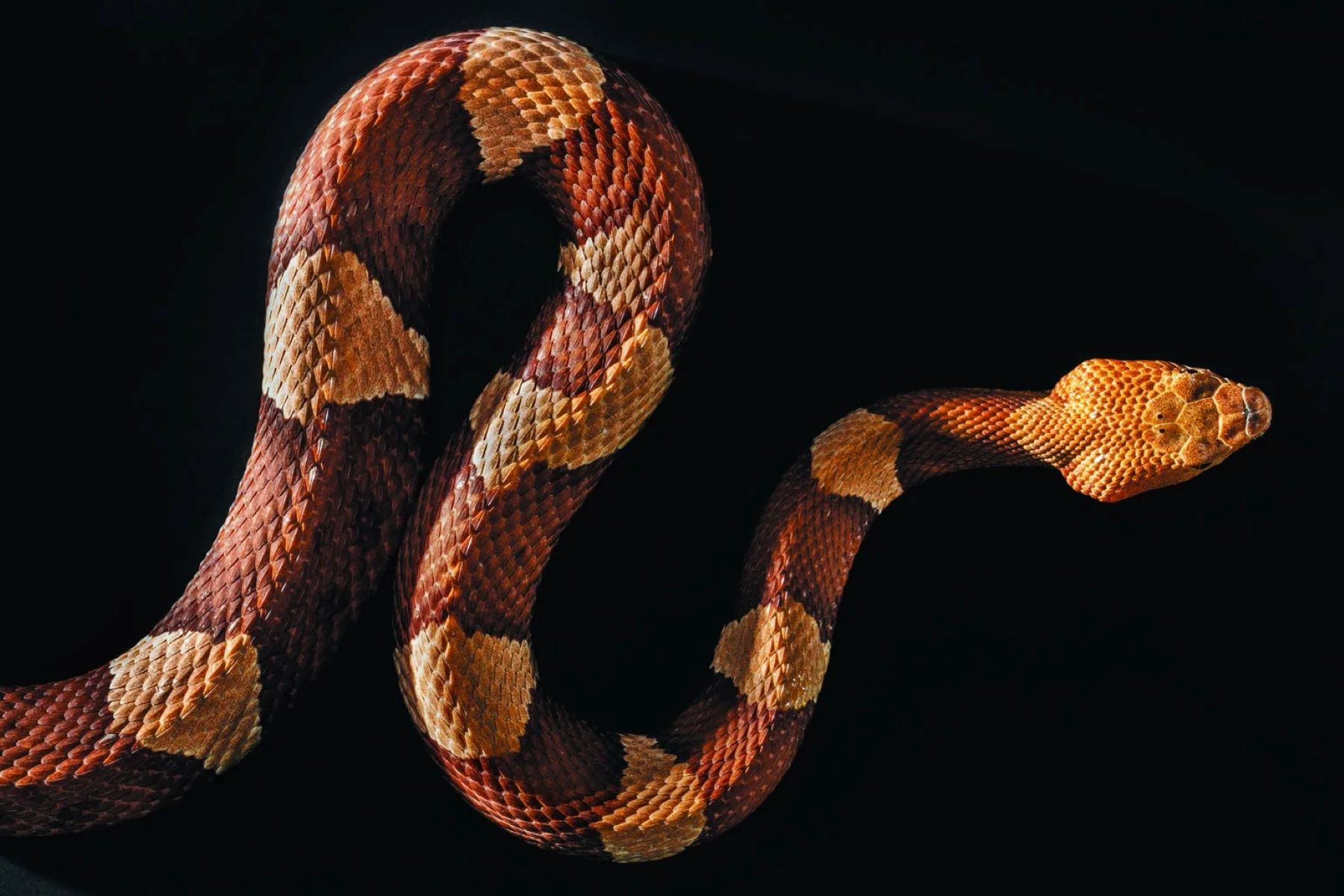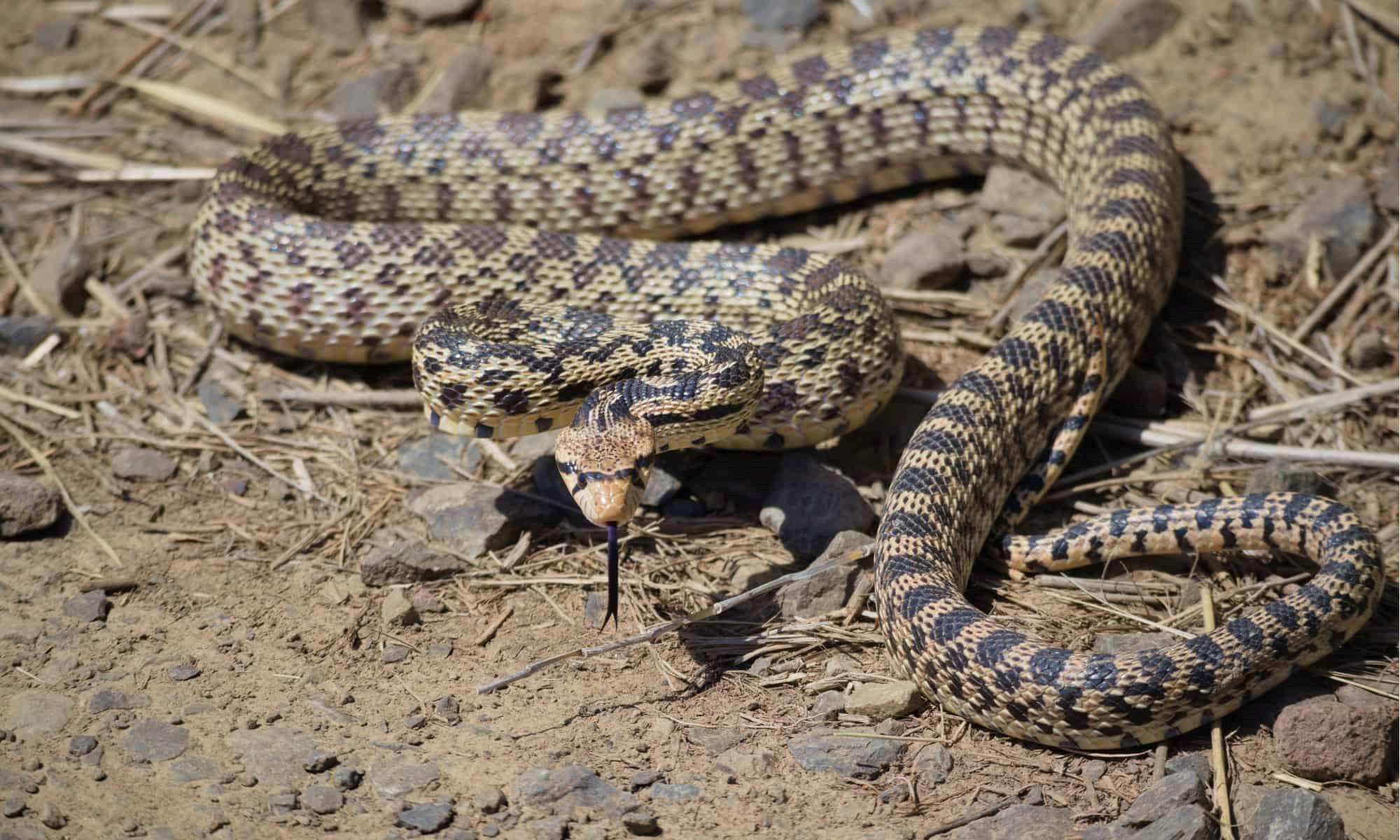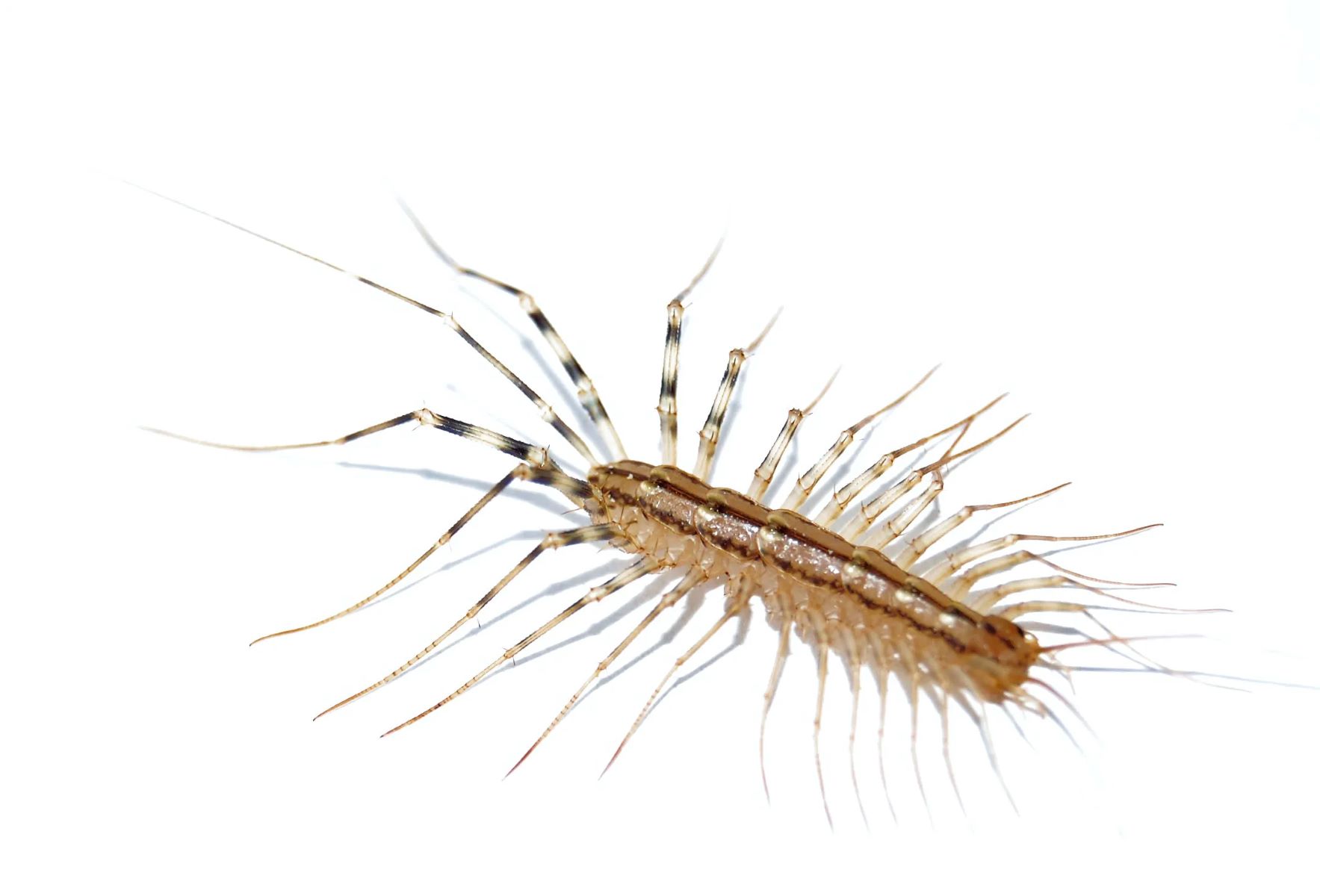Home>Science>Unveiling The Ultimate Snake Identification Hack: Distinguishing Cottonmouths From Copperheads!


Science
Unveiling The Ultimate Snake Identification Hack: Distinguishing Cottonmouths From Copperheads!
Published: February 6, 2024
Discover the ultimate snake identification hack with this science-based guide on distinguishing between cottonmouths and copperheads. Unlock the secrets to confidently identify these venomous snakes.
(Many of the links in this article redirect to a specific reviewed product. Your purchase of these products through affiliate links helps to generate commission for Regretless.com, at no extra cost. Learn more)
Table of Contents
- Introduction
- Understanding the Differences Between Cottonmouths and Copperheads
- Physical Characteristics of Cottonmouths
- Physical Characteristics of Copperheads
- Geographic Distribution of Cottonmouths and Copperheads
- Behavioral Differences Between Cottonmouths and Copperheads
- Identifying Venomous Snakes: Tips and Tricks
- Conclusion
Introduction
Snake identification can be a daunting task for many nature enthusiasts and hikers. The ability to distinguish between venomous and non-venomous snakes is crucial for ensuring safety in outdoor environments. Among the various species of snakes, cottonmouths and copperheads stand out as two of the most commonly encountered venomous snakes in North America. Both belong to the pit viper family and share certain physical similarities, making it challenging for the untrained eye to differentiate between them.
In this comprehensive guide, we will delve into the intricate details of cottonmouths and copperheads, equipping you with the knowledge and skills to identify these snakes with confidence. By understanding their physical characteristics, geographic distribution, and behavioral traits, you will gain valuable insights into distinguishing between these two species. Moreover, we will unravel a set of practical tips and tricks that will serve as your ultimate snake identification hack, allowing you to differentiate cottonmouths from copperheads effortlessly.
Whether you are an avid hiker, a nature enthusiast, or simply someone who wishes to enhance their understanding of wildlife, this guide will empower you to navigate snake-inhabited regions with a heightened sense of awareness and assurance. So, prepare to embark on a fascinating journey into the world of snake identification, where you will acquire the expertise to discern between the enigmatic cottonmouths and copperheads.
Read more: Unveiling The Truth: How To Distinguish Non-Stinging Bees From Their Stinging Counterparts
Understanding the Differences Between Cottonmouths and Copperheads
Cottonmouths and copperheads, though both belonging to the pit viper family, exhibit distinct differentiating features that set them apart. Understanding these differences is essential for accurately identifying these venomous snakes in their natural habitats.
The first notable distinction lies in their size. Cottonmouths, also known as water moccasins, are generally larger and heavier than copperheads. Adult cottonmouths can reach lengths of up to 4 feet, while copperheads typically range between 2 to 3 feet. This variance in size can be a crucial factor when observing these snakes from a safe distance.
Another differentiating factor is their coloration. Cottonmouths display dark, almost black, crossbands on a lighter background, often giving the appearance of a banded pattern. In contrast, copperheads feature hourglass-shaped crossbands with a lighter shade, resembling a coppery hue, hence their name. This distinction in color patterns serves as a valuable visual cue for differentiating between the two species.
Furthermore, their head shapes provide a clear contrast. Cottonmouths possess broad, triangular heads with a distinct facial pit between the eye and nostril, which aids in detecting heat from prey. On the other hand, copperheads have more slender heads, and their facial pits are less pronounced. This disparity in head shape is a key characteristic that aids in distinguishing between these two venomous snakes.
Additionally, their habitats and geographic distribution differ significantly. Cottonmouths are predominantly found in wetland areas such as swamps, marshes, and along the banks of rivers and lakes. In contrast, copperheads are more adaptable and can thrive in a variety of habitats, including rocky areas, forests, and grasslands. Understanding the preferred habitats of these snakes can provide valuable insights when encountering them in the wild.
By comprehending these fundamental differences in size, coloration, head shape, and habitat preferences, one can develop a keen eye for distinguishing between cottonmouths and copperheads, ultimately enhancing their ability to identify these venomous snakes with confidence.
Physical Characteristics of Cottonmouths
Cottonmouths, scientifically known as Agkistrodon piscivorus, are renowned for their striking physical attributes, which play a pivotal role in their identification. These venomous pit vipers exhibit distinct features that set them apart from other snake species, particularly the closely related copperheads.
One of the most conspicuous physical characteristics of cottonmouths is their robust and muscular build. Adult cottonmouths can reach lengths of up to 4 feet, with some individuals even exceeding this size. Their bodies are notably thick and heavy, contributing to their imposing presence in their natural habitats. This substantial size, coupled with their characteristic appearance, makes cottonmouths easily recognizable to those familiar with their physical traits.
The coloration of cottonmouths serves as a defining feature, aiding in their identification. These snakes typically display dark, almost black, crossbands that are prominently visible against a lighter background. The distinct banding pattern, often resembling a series of alternating dark and light bands, contributes to their unique visual appeal. This coloration serves a dual purpose, providing effective camouflage in their preferred wetland habitats while also serving as a visual warning to potential predators and threats.
In addition to their coloration, cottonmouths are characterized by their broad and triangular heads, which set them apart from other non-venomous snake species. This distinctive head shape, coupled with their pronounced facial pit located between the eye and nostril, distinguishes them as pit vipers. The presence of this heat-sensing pit aids cottonmouths in detecting prey and potential threats, underscoring their remarkable adaptation to their environment.
Furthermore, cottonmouths exhibit distinctive behavioral traits that complement their physical characteristics. When threatened or disturbed, they may display their namesake "cottonmouth," a behavior in which they open their mouths wide to reveal the white lining of their oral cavity, serving as a warning display. This behavior, coupled with their physical attributes, forms a comprehensive profile of the cottonmouth, enabling individuals to identify and appreciate these fascinating snakes in their natural habitats.
In summary, the physical characteristics of cottonmouths, including their substantial size, distinctive coloration, triangular head shape, and behavioral displays, collectively contribute to their unique identity as venomous pit vipers. Understanding and recognizing these physical traits is essential for accurately distinguishing cottonmouths from other snake species, particularly the closely related copperheads.
Physical Characteristics of Copperheads
Copperheads, scientifically known as Agkistrodon contortrix, are distinctive venomous snakes native to North America, renowned for their striking physical attributes that distinguish them from other snake species, particularly the closely related cottonmouths. Understanding the unique physical characteristics of copperheads is essential for accurately identifying these venomous pit vipers in their natural habitats.
One of the most notable physical features of copperheads is their size and coloration. These snakes typically range between 2 to 3 feet in length, with some individuals reaching slightly larger sizes. Their bodies exhibit a range of colors, often displaying a base color of light tan to pinkish-tan, overlaid with a series of hourglass-shaped crossbands. These crossbands, which vary in color from light brown to a rich coppery hue, give copperheads their distinctive appearance and contribute to their namesake. The overall coloration and pattern provide effective camouflage in their preferred habitats, allowing copperheads to blend seamlessly with their surroundings while remaining inconspicuous to potential threats and predators.
In addition to their coloration, copperheads are characterized by their slender and streamlined heads, which set them apart from other non-venomous snake species. Their heads are notably narrower when compared to the broader, triangular heads of cottonmouths. Furthermore, their facial pits, though present, are less pronounced than those of cottonmouths. This disparity in head shape and facial pit prominence serves as a key visual cue for differentiating copperheads from other pit vipers, contributing to their unique identity within the snake kingdom.
Furthermore, the geographic distribution of copperheads encompasses a wide range of habitats, including rocky areas, forests, grasslands, and even suburban neighborhoods. This adaptability and versatility in habitat preferences make copperheads highly adaptable and widely distributed across their native range. Understanding the diverse habitats where copperheads can be encountered is crucial for individuals seeking to identify and appreciate these fascinating snakes in various environmental settings.
In summary, the physical characteristics of copperheads, including their size, distinctive coloration, slender head shape, and versatile habitat preferences, collectively contribute to their unique identity as venomous pit vipers. Recognizing and comprehending these physical traits is essential for accurately distinguishing copperheads from other snake species, particularly the closely related cottonmouths.
Geographic Distribution of Cottonmouths and Copperheads
The geographic distribution of cottonmouths and copperheads encompasses diverse habitats across North America, providing valuable insights into the range and prevalence of these venomous pit vipers. Understanding the distinct geographic preferences of these snakes is essential for individuals seeking to identify and appreciate these fascinating species in their natural environments.
Cottonmouths, also known as water moccasins, are primarily found in the southeastern United States, with their range extending from North Carolina to Florida and westward to Texas. These venomous pit vipers exhibit a strong affinity for wetland habitats, including swamps, marshes, and the banks of rivers and lakes. Their preference for aquatic environments is reflected in their name, as they are often encountered near water sources, showcasing their remarkable adaptation to these unique ecosystems. Furthermore, cottonmouths have been documented in parts of the Midwest and along the Mississippi River, highlighting the breadth of their geographic distribution within the United States.
In contrast, copperheads boast a broader geographic range, encompassing a wide expanse of North America. These venomous snakes can be found in diverse habitats, including rocky areas, forests, grasslands, and suburban neighborhoods. Their adaptability and versatility in habitat preferences contribute to their widespread distribution, allowing them to thrive in various environmental settings. Copperheads are distributed across the eastern and central United States, extending from the northeastern states down to the Gulf of Mexico and westward to the Great Plains. Their presence in suburban areas underscores their ability to coexist with human populations, making it essential for individuals in these regions to be aware of their potential encounters with these venomous pit vipers.
By gaining an understanding of the distinct geographic distribution of cottonmouths and copperheads, individuals can enhance their knowledge of these venomous snakes and develop a heightened awareness of the regions where they are likely to be encountered. This knowledge serves as a valuable tool for nature enthusiasts, hikers, and individuals residing in snake-inhabited areas, allowing them to navigate these environments with a comprehensive understanding of the geographic preferences of cottonmouths and copperheads.
Behavioral Differences Between Cottonmouths and Copperheads
The behavioral disparities between cottonmouths and copperheads offer valuable insights into the distinct traits and tendencies exhibited by these venomous pit vipers. Understanding these behavioral differences is essential for individuals seeking to identify and comprehend the unique behavioral profiles of these enigmatic snakes in their natural habitats.
Cottonmouths, also known as water moccasins, are renowned for their semi-aquatic lifestyle and their strong affinity for wetland environments. These venomous pit vipers exhibit an assertive and defensive demeanor when encountered, often displaying their namesake "cottonmouth" behavior as a warning display. When threatened or disturbed, cottonmouths may open their mouths wide, revealing the white lining of their oral cavity in a striking display of aggression. This behavior serves as a visual warning to potential threats, signaling their readiness to defend themselves when provoked. Additionally, cottonmouths are known for their strong swimming abilities and may take to the water when threatened, further emphasizing their adaptation to aquatic habitats. Their assertive behavior and defensive displays underscore the unique behavioral traits exhibited by cottonmouths in their natural environments.
In contrast, copperheads display a more reclusive and secretive demeanor, often preferring to remain concealed and motionless when encountered. These venomous pit vipers rely on their cryptic coloration and pattern to blend seamlessly with their surroundings, utilizing camouflage as their primary defense mechanism. When approached, copperheads may remain motionless or slowly retreat to safety, relying on their ability to remain inconspicuous to potential threats. This secretive behavior aligns with their preference for diverse habitats, including rocky areas, forests, and suburban neighborhoods, where they can effectively utilize their camouflage to avoid detection. Furthermore, copperheads are known for their thermoregulatory behavior, actively seeking out warm basking spots during cooler periods and retreating to shaded areas during the heat of the day. This behavioral adaptation allows them to maintain optimal body temperature and energy efficiency in varying environmental conditions.
By recognizing the behavioral disparities between cottonmouths and copperheads, individuals can gain a deeper understanding of the unique traits exhibited by these venomous pit vipers. These behavioral insights provide a comprehensive perspective on the distinctive behavioral profiles of cottonmouths and copperheads, enhancing the ability to identify and appreciate these fascinating snakes in their respective habitats.
Identifying Venomous Snakes: Tips and Tricks
Identifying venomous snakes, such as cottonmouths and copperheads, requires a keen eye and a comprehensive understanding of their distinguishing features. Whether you are exploring natural habitats, hiking through wooded trails, or simply seeking to enhance your knowledge of wildlife, the following tips and tricks will empower you to discern between venomous and non-venomous snakes with confidence.
-
Educate Yourself: Familiarize yourself with the physical characteristics, coloration, and behavioral traits of venomous snakes native to your region. Understanding the specific features of cottonmouths and copperheads, including their size, color patterns, head shapes, and preferred habitats, will serve as a foundation for accurate identification.
-
Observe from a Safe Distance: When encountering a snake in the wild, maintain a safe distance and avoid provoking or approaching the animal. Use binoculars or a zoom lens to observe and identify the snake from a distance, allowing you to appreciate its natural beauty while ensuring your safety.
-
Distinctive Head Shapes: Pay close attention to the shape of the snake's head. Venomous pit vipers, including cottonmouths and copperheads, exhibit distinct head shapes. Cottonmouths possess broad, triangular heads with a pronounced facial pit, while copperheads have narrower heads with less prominent facial pits.
-
Coloration and Patterns: Take note of the snake's coloration and patterns. Cottonmouths display dark, almost black, crossbands on a lighter background, often resembling a banded pattern. In contrast, copperheads feature hourglass-shaped crossbands with a lighter shade, resembling a coppery hue. These distinct color patterns are valuable visual cues for identification.
-
Habitat Preferences: Consider the habitat where the snake was encountered. Cottonmouths are commonly found in wetland areas such as swamps and marshes, while copperheads thrive in diverse habitats, including rocky areas, forests, and suburban neighborhoods. Understanding their habitat preferences can aid in accurate identification.
-
Behavioral Displays: Take note of the snake's behavior when approached. Cottonmouths may exhibit their namesake "cottonmouth" behavior by opening their mouths wide as a warning display, while copperheads tend to remain concealed and motionless, relying on their camouflage for protection.
By incorporating these tips and tricks into your approach to snake identification, you will develop a heightened awareness of venomous snakes and their unique attributes. This knowledge will not only enhance your ability to identify cottonmouths and copperheads but also foster a deeper appreciation for the diverse and captivating world of snakes in their natural habitats.
Conclusion
In conclusion, the ability to differentiate between cottonmouths and copperheads is a valuable skill for individuals venturing into snake-inhabited regions. Through a comprehensive understanding of their physical characteristics, geographic distribution, and behavioral traits, one can navigate these environments with a heightened sense of awareness and assurance.
The distinct physical attributes of cottonmouths, including their robust build, dark crossbands, and broad triangular heads, set them apart as formidable pit vipers inhabiting wetland ecosystems. On the other hand, the slender bodies, hourglass-shaped crossbands, and versatile habitat preferences of copperheads contribute to their unique identity within the snake kingdom.
Moreover, the geographic distribution of these venomous snakes provides valuable insights into the regions where they are likely to be encountered. Cottonmouths' affinity for wetland habitats and the broader range of habitats preferred by copperheads underscore the diverse environmental settings where these snakes thrive.
Understanding the behavioral disparities between cottonmouths and copperheads further enhances the ability to identify and appreciate these venomous pit vipers in their natural habitats. The assertive and defensive demeanor exhibited by cottonmouths, contrasted with the reclusive and secretive behavior of copperheads, offers a comprehensive perspective on the behavioral profiles of these enigmatic snakes.
By incorporating practical tips and tricks into the identification process, individuals can develop a heightened awareness of venomous snakes and confidently discern between cottonmouths and copperheads. From observing distinctive head shapes and coloration to considering habitat preferences and behavioral displays, these strategies empower individuals to navigate snake-inhabited regions with confidence and respect for these fascinating creatures.
Ultimately, the knowledge and skills acquired through this guide serve as a valuable asset for nature enthusiasts, hikers, and individuals residing in snake-inhabited areas. By unraveling the intricate details of cottonmouths and copperheads, this guide equips individuals with the expertise to discern between these enigmatic pit vipers, fostering a deeper appreciation for the captivating world of snakes in their natural habitats.














